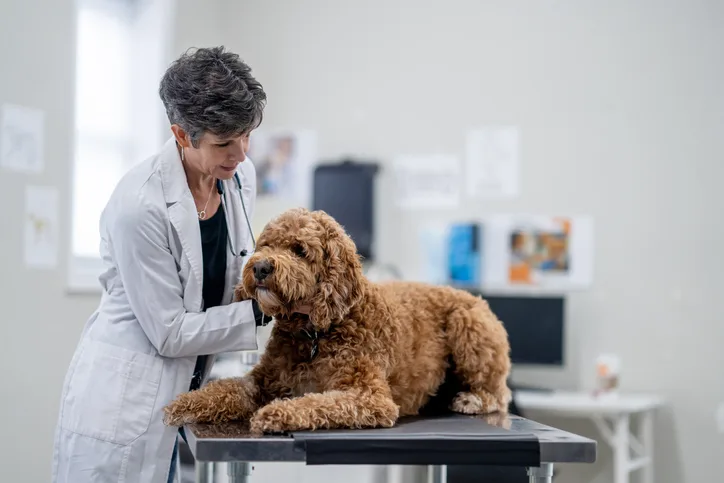
In the Literature
Loh JR, Cleland N, Beierer L, Drew J, Wilson L, Delisser P. Caudoventral hip luxation in 160 dogs (2003-2023): a multicenter retrospective case series. Vet Surg. 2024;53(4):586-595. doi:10.1111/vsu.14093
The Research …
Hip luxation is a common injury in dogs and typically occurs in the craniodorsal direction. Caudoventral luxation is less common and may have different underlying causes and treatment options. The greater trochanter is often difficult to locate in patients with ventral luxation due to distal and medial displacement.
The intention of this study of caudoventral luxations was to characterize etiology, commonly affected breeds, treatment options, and outcomes. Records from 5 referral hospital groups over a 20-year period were reviewed. Cases that involved euthanasia or pain management only (without reduction) or lacked follow-up information were excluded. Patient demographics, training level of clinicians providing treatment, and type and number of treatments were recorded. Outcomes were evaluated on a per-treatment and a per-case basis due to variations in treatment and order in which multiple treatments were performed.
Included cases comprised 170 luxations in 160 dogs; 10 dogs had luxations in both hips at different times. The majority (82.9%) of cases were classified as low-trauma accidents, and 6.5% were due to vehicular trauma. Degenerative osteoarthritic changes and/or hip dysplasia was identified in 2 of 108 available radiographic studies. Poodles and poodle crossbreeds were overrepresented, accounting for 49.4% of cases.
A total of 299 treatments was performed. On a per-treatment basis, closed reduction alone had a success rate of 9.1% (3/33), closed reduction with an Ehmer sling had a success rate of 15.2% (5/33), and closed reduction with hobbles had a success rate of 48.8% (81/166). Dogs that underwent sequential closed reductions with hobbles had success rates of 47.5%, 52.9%, 46.2%, and 0% with 0, 1, 2, and 3 previous luxations, respectively. On a per-case basis, closed reduction alone had a success rate of 10.3% (3/29), closed reduction with an Ehmer sling had a success rate of 18.5% (5/27), and closed reduction with hobbles (maximum of 3 attempts) had a success rate of 61.8% (81/131). Complications with hobbles were frequent (31.9%) but minor. Surgical treatment with toggle rod stabilization had an 88.2% (30/34) success rate on a per-treatment basis. Implant type did not appear to affect outcome.
… The Takeaways
Key pearls to put into practice:
Caudoventral hip luxations typically occur in cases with low to no trauma and seem to be more common in small-breed dogs, with poodles and poodle crossbreeds overrepresented. Pre-existing hip dysplasia is unlikely.
Failure of a previous closed reduction attempt does not necessarily preclude another attempt, especially if hobbles were not previously applied. Clear communication with pet owners regarding expectations is important.
Based on the results of this study, success with closed reduction improves with increasing age at first onset (1.15 times more likely with each additional year of age), board certification of clinician performing the treatment (2.68 times more likely), and use of hobbles (7.62 times more likely).
You are reading 2-Minute Takeaways, a research summary resource presented by Clinician’s Brief. Clinician’s Brief does not conduct primary research.